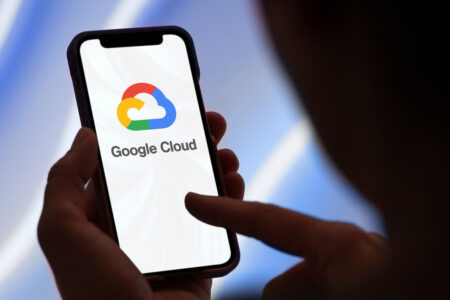For all the misery caused by COVID-19, the pandemic has also accelerated in companies from every industry the hunt for innovation and the shift to data-driven business cultures, business models and processes.
At Microsoft, that’s led to high-impact partnerships that are helping companies in retail, logistics, healthcare and pharmaceuticals create new businesses, engage with customers in new ways, collaborate more rapidly and generate better customer experiences.
Microsoft chief medical officer David Rhew, who’s been in the job for exactly one year, has some compelling perspectives on all those dynamics due to the unexpected confluence of his responsibilities and Microsoft’s mission with a global health crisis.

“One of the things we think about is how technology can help improve health outcomes and address global health issues like COVID-19,” said Rhew. “For Microsoft, COVID-19 was personal on many levels, including the fact that we have employees in living in countries across the globe, including China. And as we came to understand the full extent of the crisis, we saw quickly that our efforts had to expand.”
In a recent Teams call, Rhew outlined a number of ways in which Microsoft has expanded its efforts, most often in partnership with a wide variety of customers.
One of the epicenters for the pandemic in the U.S. was in Kirkland, Washington, very close to Microsoft headquarters.
“We immediately began working closely with one of our healthcare partners, Providence Health System, a large multi-state multi-hospital health system with significant presence in the Greater Seattle, Portland, and Los Angeles/Southern California regions,” Rhew said.
“We saw that as local residents were seeking information about COVID-19 and trying to schedule care, Providence’s call centers, emergency rooms, and urgent-care centers were becoming overwhelmed.
“It turns out that Microsoft was already in the process of building an AI-based chatbot for healthcare, so we fast-tracked that effort and worked closely with Providence on the final version of the COVID-19 chatbot. We found that almost immediately the chatbot not only helped disseminate individualized recommendations to a large population of persons, but it also potentially helped decrease the spread of community infection because more people were being advised to quarantine at home.”
Around the same time, Rhew said, another Microsoft team began working with GE Healthcare—one of the suppliers of ventilators during the crisis—on an IoT solution to pull data directly from the machines so they could be operated remotely. The result was more productive operations, a reduction in the demand for personal protective equipment (PPE) and decreased exposure of the infection to ICU healthcare providers.
In another example, Rhew cited several collaborations with organizations and companies from different industries. In one example, Microsoft partnered with the American Hospital Association, Kaiser Permanente, Kearney, UPS and Merit Solutions to manage and optimize the collection and distribution of PPE.
In another example, Microsoft joined “The Fight is in Us” campaign to increase the donation of convalescent plasma for research into and treatment of COVID-19. Also, in collaboration with the Mayo Clinic, MITRE and several other healthcare organizations, Microsoft joined the COVID-19 Healthcare Coalition to promote the open exchange of anonymized healthcare data and to share best practices for battling COVID-19.
Looking forward, Microsoft has been working with the large healthcare insurer, UnitedHealth Group (UHG), to enable a safer return to the workplace and has collaborated on iProtectWell, a mobile application in which employees answer questions on a daily basis regarding whether or not they have had recent exposure and/or symptoms suggestive of COVID-19 infection. “If an employee has had an exposure or is experiencing symptoms suggestive of COVID-19, then he or she can be directly connected to a lab testing facility and/or receive a home-based lab test kit (based on availability and eligibility). iProtectWell can rapidly help symptomatic or high-risk employees get the tests they need and then, if necessary, the appropriate treatments and timely follow-up,” Rhew said.
“It becomes a closed-loop process and that’s ideal.”
That ability to provide a linear and connected network of information and care ultimately leads to better experiences for people, which is now the ultimate goal as the worlds of digital and healthcare become more tightly fused.
“Chief Information Officers’ involvement with healthcare used to be focused solely on electronic health records (EHRs),” Rhew said. “But today, the scope has expanded to creating exceptional experiences inside and outside of the hospital and clinic for both the patient and the practitioner. If patients receive a better experience, they are more likely to increase their engagement in their personal health, which should lead to more proactive care, improved outcomes and lower costs.
“If practitioners are able to have better experiences, then they have a much better chance of delivering a great experience to patients as well.”
For Stony Brook Medicine in Stony Brook, New York, that meant getting thousands of patients up and running on Microsoft Teams in just a few weeks so that more patients could be seen by their healthcare providers via telemedicine.
And within clinics and treatment centers, AI is becoming essential. One example is with “ambient clinical listening,” which allows patient engagements to be transcribed and codified and then attached to EHRs. Nuance Healthcare, in collaboration with Microsoft, has launched DAX (Dragon Ambient Experience) to help practitioners seamlessly capture information from the patient-clinician discussion and ultimately generate better experiences for everyone involved.
The COVID-19 crisis has also certainly pushed privacy and trust to the forefront, and Rhew said Microsoft is working with healthcare partners and customers on solutions and approaches that will allow everyone involved to feel comfortable with those tricky issues. “The only way to do that is to demonstrate very clearly to people that the processes and the technologies are secure and transparent,” Rhew said.
“Along the way, we emphasize that Microsoft will not monetize the data of our healthcare partners. Our goal is to optimize the workflow so that it’s easier to understand and ensure that where and how data are managed is as transparent to patients and our partners as possible.”
In terms of major technology trends, said Rhew, “We’re seeing a constellation of connected-care and virtual-care solutions that are designed to enable better care. So we ask, is the data interoperable? Do the data sets enable us to build new learning models?”
Those challenges provide perfect opportunities for a next generation of cloud computing and AI tools, Rhew said.
“From chatbots to natural-language processing to voice, and then to heavy analysis of large volumes of data, all the way out to supercomputer analyses at the cellular level—it’s a perfect fit for cloud and AI,” Rhew said.
Microsoft is intent on transforming not only companies but also industries. “Everyone today across all major healthcare sectors—provider, payer, life sciences, and medical technology—is talking about digital therapeutics, and it’s an enormously exciting field,” Rhew said.
“Every organization is on a digital journey—and COVID has exposed the need for all of us to go faster. The way to that accelerated future is through secure and scalable digital platforms and interoperable data.”
This article is brought to you by Microsoft.







